Discover Kitesurfing Packages: A Complete Guide
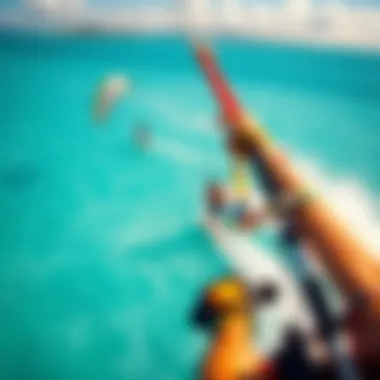
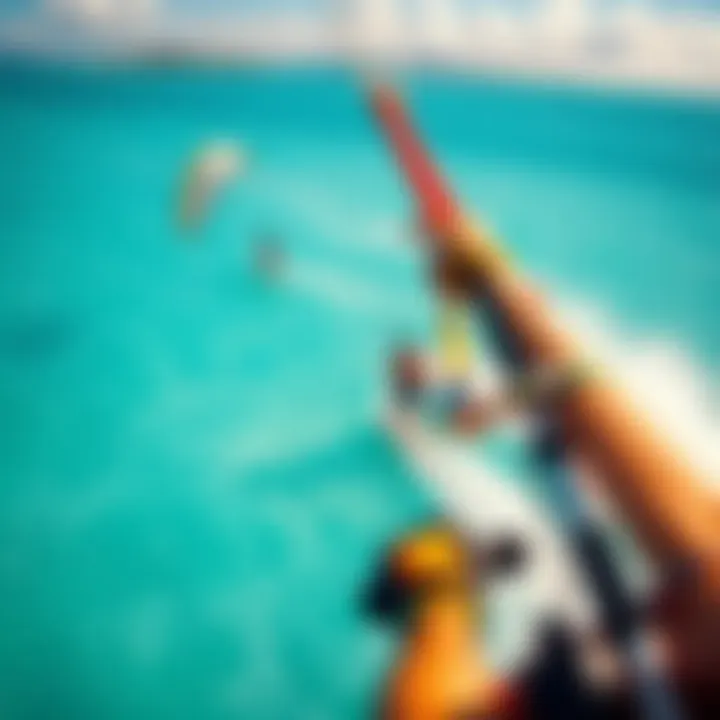
Gear Selection
When embarking on your kitesurfing journey, the first stop should be gear selection. Having the right equipment can make all the difference between a thrilling experience and a frustrating one. The main components include kites, boards, harnesses, and safety gear. Let’s delve into these essential items as well as the various aspects to consider when shopping for kitesurfing packages.
Types of Kites
Kites come in various shapes and sizes, each designed to cater to different wind conditions and rider preferences. Broadly speaking, you'll encounter three types:
- C-kites: Known for their high performance and resilience in extreme conditions, these kites are most often favored by those who love freestyle tricks. However, they require advanced skill levels to master.
- Bow kites: These are ideal for beginners thanks to their accessibility and ease of use. Their design allows for better control, especially in lighter winds.
- Delta kites: These kites provide a great mix of stability and reliability. They work well in a variety of conditions, making them a solid choice for all levels of kitesurfers.
When choosing your kite, consider not just its type but also its surface area. A larger kite captures more wind and generates more lift, which is crucial for beginners, while smaller kites are better for experienced riders looking for speed and control in strong winds.
Choosing the Right Board
Once you have your kite sorted, it’s time to select a board. The board is your direct connection to the water, and its design influences your ride significantly. Here are crucial aspects:
- Type: Boards vary between directional and twin-tip. Directional boards are better for surf-style riding, while twin-tips are versatile and user-friendly.
- Size: Board size affects your performance depending on your weight and skill level. Beginners usually start with larger boards, as they provide better stability and easier starting capability, while advanced riders may opt for smaller boards for agility.
- Material: Modern boards are typically constructed from either fiberglass or carbon fiber. Carbon fiber boards, while pricier, offer superior strength and a lighter feel, enhancing your performance significantly.
Skill Development
When the wind is right and you’re strapped in, the real fun begins. But don’t let the excitement overshadow the importance of developing your skills. Progressing in kitesurfing requires practice and a good grasp of essential techniques.
Essential Techniques
Many newcomers struggle with basic techniques, which can hinder their progress. One of the first hurdles is learning how to control the kite. A common tip is to master the "power stroke," where you pull the bar down, effectively directing the kite to catch the wind. This is the key to learning how to gain speed and lift off the water. Other critical techniques include turning the kite efficiently, learning to ride upwind, and practicing jumping correctly, which involves timing your movements with the kite’s power and the board’s angle.
Progression Tips
For those looking to elevate their kitesurfing game, here are a few tips:
- Practice Regularly: Consistency is key. Frequent practice helps build muscle memory and increases confidence.
- Take Lessons: If you're serious about improving quickly, investing in lessons from certified instructors can fast-track your learning.
- Join a Community: Surrounding yourself with experienced kiteboarders can provide valuable insights and potentially safer riding days. Online forums or local clubs can connect you with fellow enthusiasts who share the same passion.
"Practice doesn’t make perfect. Practice makes permanent."
Understanding Kitesurfing Packages
Kitesurfing is not merely a recreational activity; it’s a thrilling blend of adventure and skill, underpinned by the right equipment and support. Understanding kitesurfing packages is crucial for anyone looking to dive into this world. These packages bundle various offerings designed to cater to different levels of expertise and preferences, simplifying the process of selecting the ideal gear and instruction needed to get started or elevate learning. By examining what constitutes a kitesurfing package and the various types available, enthusiasts can identify the options best suited to their needs and ensure they make informed decisions.
What Constitutes a Kitesurfing Package?
A kitesurfing package typically includes equipment and services that facilitate the sport. Most commonly, these packages feature essential items like kites, boards, harnesses, and safety gear, as well as lessons or coaching aimed at improving skill levels. The composition of a package can differ based on what the provider offers and the purpose of the package—whether for beginners or seasoned athletes.
Types of Packages Available
When it comes to kitesurfing, various packaging options cater to different tastes and requirements. Choosing the right type can significantly impact a novice's learning curve or an expert's performance during thrilling rides. Here’s a look at three main types of packages you might encounter:
All-Inclusive Packages
All-inclusive packages stand out as a holistic solution for kitesurfing enthusiasts. These bundles often combine equipment rental, lessons, accommodation, and even meals, ensuring that every aspect of the experience is catered for. This package’s key characteristic is its convenience, attracting those who want to focus on the sport without worrying about logistics. As a beneficial choice, all-inclusive packages can help novices immerse themselves fully in the learning experience without the distraction of separate bookings. However, travelers should weigh the benefits against their budget; the comprehensiveness of these packages often comes with a higher price tag.
Gear-Only Packages
For those who already have a knack for kitesurfing or prefer to customize their experience, gear-only packages may be a better fit. These typically provide only the essential equipment needed for the sport. A primary incentive for choosing this option is the affordability—these packages are often less expensive because they do not include lessons or services that aren’t necessary for seasoned riders. However, they may miss out on the guidance that could elevate a beginner’s performance. So, if you’re someone with prior experience and know the ropes, gear-only options are worth considering.
Destination Packages
Destination packages bring an exciting twist for those keen on exploring while kitesurfing. This type of offering focuses on specific locations known for their ideal kitesurfing conditions. These packages frequently include not just the equipment and lessons but also local accommodation and possibly tours or excursions. For example, one may find a destination package that specifically highlights the turquoise waters of the Caribbean or less frequented locations in Southeast Asia. The unique feature here is the opportunity to combine travel with kitesurfing, though you should consider whether the package's included lessons match your skill level.
This comprehensive exploration of the types of kitesurfing packages positions readers to make better choices, aligning their preferences with the most suitable offerings. By understanding the essential components, enthusiasts can navigate the kitesurfing marketplace with greater confidence.
Key Features of Kitesurfing Packages
When diving into kitesurfing, understanding the key features of various packages available is fundamental. These features can greatly impact the quality of the experience, making it crucial to dissect each element in detail. From the equipment provided to instruction levels, each facet can weigh heavily on a kitesurfer’s adventure. Here, we will break down the primary components that define the efficiency and appeal of different kitesurfing packages.
Equipment Included
Kites
Kites are the heart of the kitesurfing experience; without them, it's all just a dream. The specific aspect of kites that demands attention is size and type, which hugely influences performance. Generally, kites can be classified as either inflatable or soft kites. Inflatable ones are often favored by beginners due to their stability and ease of use. On the other hand, experienced riders may lean toward soft kites for their lighter weight and responsiveness.
The key characteristic of kites is their design, which dictates factors like lift, control, and speed. A beneficial choice often made by new riders is opting for a moderate-sized kite. This option offers a balance between power and ease of handling.
However, it’s vital to note that environmental conditions heavily dictate kite performance. A kite that excels in strong winds may not serve a beginner well in gentle breezes. Understanding these unique features is key in skimming through the myriad of options available.
Boards
Boards are equally important in dictating the kitesurfing experience. They come in various shapes, sizes, and types, and the specific aspect to consider is their volume and shape. Freestyle boards are typically thinner with a sharper edge while freeride boards tend to be wider, providing more stability.
The key characteristic highlighted in boards is their flex. A board with more flex can absorb chop and provide a smoother ride, making it a beneficial option for many. Conversely, a stiffer board allows for faster speeds and better performance on flat water.
Moreover, one unique feature to keep in mind is the footstrap system. Adjustable footstraps can greatly enhance comfort and safety, ensuring that it becomes easier to control the board. And, as with kites, local conditions can dictate which type of board performs best, balancing advantages with personal preference.

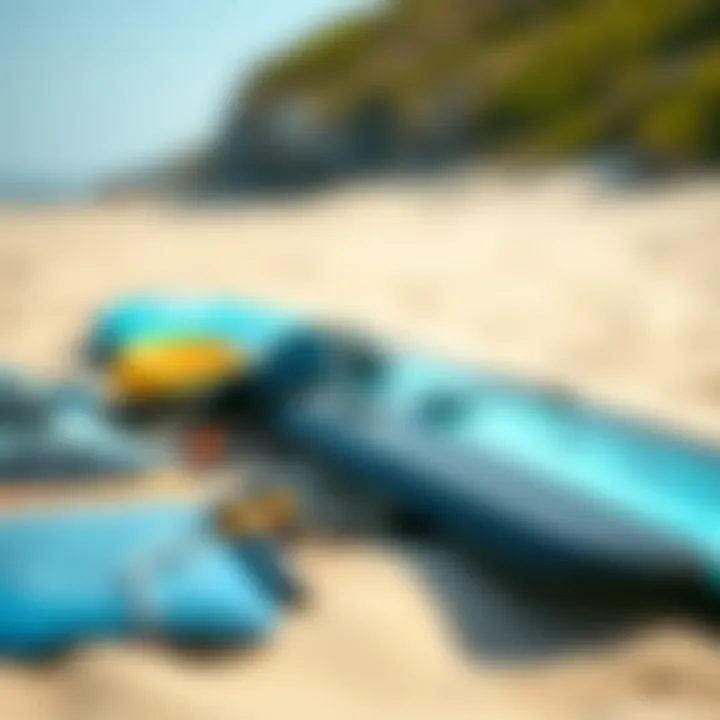
Harnesses
Harnesses connect you to the kite, making them essential for any session. The specific aspect to evaluate when considering harnesses is their type and fit. There are generally two types: seat harnesses and waist harnesses. Seat harnesses offer more support and are typically favored by beginners, while waist harnesses allow for greater mobility, making them popular among experienced kiteboarders.
A key characteristic of harnesses is comfort. A well-fitted harness can significantly enhance the kitesurfing experience, reducing fatigue and enhancing control. The unique feature that many overlook is the padding. Extra padding can provide additional comfort, which is invaluable during long sessions. However, if poorly fitted, a harness can become slippery or restrictive, negating any advantages.
Instruction and Support
Beginner Lessons
For newcomers, beginner lessons provide not just theoretical knowledge but practical experience. The major strength of such lessons is the structured environment they offer, allowing for gradual skill development. They introduce essential techniques, safety protocols, and equipment familiarization. Having a certified instructor guide you can make all the difference.
A distinctive feature of beginner lessons is their focus on safety. Most packages include a safety gear overview and practice, which can be beneficial in gaining confidence before heading out on the water alone. However, one must be prepared for initial challenges, as learning any new sport involves a learning curve.
Advanced Coaching
Advanced coaching is tailored for those looking to refine their skills further and tackle complex maneuvers. This type of instruction ideally emphasizes personalized feedback and advanced techniques tailored to one’s specific goals in kitesurfing.
A standout characteristic is the opportunity to learn new tricks or refine existing techniques with a professional coach. This can be particularly beneficial in boosting confidence as you progress through various skill levels. However, the requirement to adapt to feedback quickly can be a hurdle for some.
Additional Benefits
Insurance Options
When purchasing a kitesurfing package, insurance options can introduce an added layer of security. The main aspect of insurance to consider is coverage type for personal injuries or equipment damage. Having insurance is crucial, especially in activities that can be as unpredictable as kitesurfing.
A significant benefit of bundled insurance options is reassurance. Knowing that you are covered during your adventures allows for more freedom to enjoy your time on the water without constant worry. Yet, there might be limitations in policies, so it's essential to scrutinize terms for the best fit.
Equipment Rental
Equipment rental is another pivotal aspect of kitesurfing packages, especially for those who might be just getting their feet wet, or for travelers who don't want to lug gear around. The key characteristic here is the flexibility to rent high-quality equipment, which allows users to try before investing in their personal gear.
Unique to rental agreements is the option for maintenance and customer support. This can serve to alleviate concerns about gear performance while on the water. However, costs can stack up if you're renting multiple times, making it a critical point to weigh against potential purchases.
In summary, understanding the key features of kitesurfing packages is foundational for both novices and seasoned pros. Each element, from equipment to instruction and additional benefits, serves to enrich the kitesurfing experience. Being well-informed lets users make better decisions and enhances their time spent engaging with this thrilling sport.
Evaluating Package Costs
Understanding the costs associated with kitesurfing packages is crucial for making informed purchasing decisions. Not only do kitesurfing packages vary widely in price, but the right choice can enhance your overall experience, aligning with your level of expertise, preferences, and budget. In this section, we will explore price ranges and break down the factors that influence package costs, helping you navigate the often murky waters of buying kitesurfing gear and experiences.
Price Ranges
When it comes to kitesurfing packages, you can encounter a broad spectrum of price points. It ranges from affordable entry-level options to premium all-inclusive experiences. Here's a breakdown of what you might expect:
- Basic Packages: These typically start around $500 and may include essential equipment without extra lessons or perks.
- Mid-Range Packages: Expect to pay between $1,000 and $2,000 for these, which often encompass better quality gear along with some instruction or local support.
- Luxury Packages: For the more discerning rider, luxury packages can soar up from $2,500, featuring top-of-the-line equipment, comprehensive lessons, and sometimes even accommodation.
Understanding these ranges helps in setting realistic expectations. If you're a newbie looking to try your hand at kitesurfing, consider the basic options; they often provide a good introduction without breaking the bank.
Factors Influencing Cost
Several elements play into the pricing of kitesurfing packages, each contributing differently depending on the package's design and inclusions.
Brand Quality
The brand of equipment can significantly affect the overall package cost. Well-known brands often charge a premium for their gear, which usually comes with a reputation for quality. For instance, brands like Naish or Cabrinha have established themselves as top-tier in terms of reliability and performance.
- Key Characteristic: The durability and performance of the equipment.
- Why It's Beneficial: High-quality equipment can enhance your kitesurfing experience, making it more enjoyable and safe.
- Unique Feature: These brands often provide warranties or better customer service, offering peace of mind. However, the drawback is that the initial investment can be steep for those just starting out.
Included Services
The included services in a package can greatly alter its total price. This covers everything from safety gear to personalized instruction.
- Key Characteristic: Classes or lessons can range from beginner to advanced coaching, influencing cost.
- Why It's a Popular Choice: Packages that include lessons tend to attract those new to the sport, as they help build confidence.
- Unique Feature: Packages that offer additional benefits like guided tours or local insights are often more expensive, yet they can enhance the overall value by providing an immersive experience. However, these added services may not align with every individual's priorities or budget.
Destination Popularity
The kitesurfing destination itself plays a vital role in package pricing. Popular locations like Maui or Cabarete often have higher prices due to demand.
- Key Characteristic: More traveled destinations can see inflated costs due to the tourist influx.
- Why It's a Beneficial Choice: Well-traveled spots tend to have better infrastructure and local support for kitesurfers, offering a more enjoyable experience.
- Unique Feature: Less popular locations might offer more budget-friendly packages, yet they can lack the same level of amenities or safety resources. While this could save some cash, it might not provide the same excitement or community that popular places offer.
In summary, understanding the interplay of brand quality, included services, and destination popularity is essential for evaluating kitesurfing package costs. This insight will allow you to make a well-informed decision that aligns with both your budget and your kitesurfing aspirations.
"Knowing what influences costs can turn your kitesurfing dream into reality without financial regret."
For more in-depth kitesurfing discussions, you can check out resources like Wikipedia or the insights shared by fellow enthusiasts on Reddit.
Selecting the Right Package for You
Choosing the right kitesurfing package is essential for ensuring an awe-inspiring experience while you're out on the waters. With so many options splashing around in the marketplace, understanding what fits your particular needs can save you both time and money. It's not just about the gear; it’s about the whole experience, from lessons to the right beach. This section delves into key considerations that can tilt the scales in favor of your perfect package.
Experience Level Considerations
When selecting a kitesurfing package, one of the first elements to weigh is your experience level. Are you a first-timer just about to venture into the wild world of wind and waves, or are you a seasoned pro looking to sharpen your skills? Identifying where you lie on that spectrum significantly influences the kind of package suitable for you.
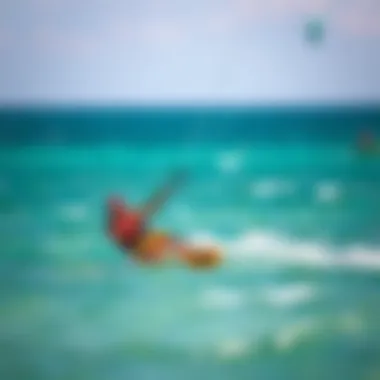
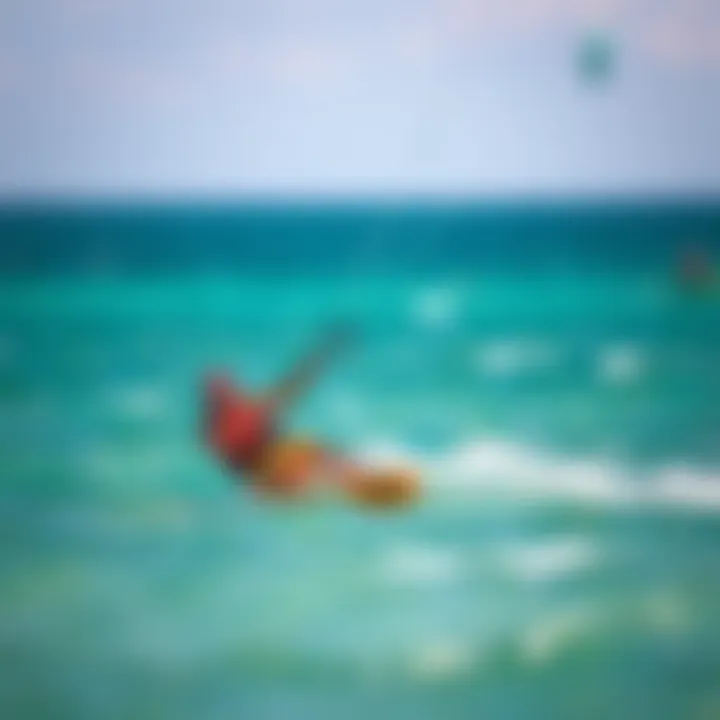
Here's the crux of it: beginners should prioritize packages that offer comprehensive lessons and guided assistance. A package with beginner lessons ensures you're not left floundering in unfamiliar waters. In contrast, more advanced kiteboarders often seek packages with minimal instruction but include amenities like gear upgrades or competitions. This understanding helps streamline your choices and paves the way for a fulfilling kitesurfing experience.
Location Preferences
Tropical vs. Windy Locations
When considering location, you’re often faced with the choice between tropical paradises and the windy coasts that kitesurfers adore. Tropical locations typically boast warm waters and a scenic backdrop, making them enticing for both relaxation and adventure. Places like the Caribbean offer steady winds paired with picturesque settings, creating a balance that appeals to a broad audience.
On the flip side, windy locations, such as the Gorge in Oregon, often make up for less idyllic views with consistent strong winds crucial for kitesurfing. For the adrenaline junkie, these conditions can mean epic rides. However, you might miss out on the serene, sun-kissed lounging that's a hallmark of tropical spots. Each choice has its unique advantages—what suits your taste and kitesurfing intentions is what counts.
Accessibility
Accessibility also plays a monumental role in package selection. Is getting to the kitesurfing spot a piece of cake or does it feel like a Herculean task? Location proximity to major transport links—airports, decent roads, and local accommodations—directly impacts your experience. You can find packages that promise adventure, but if the travel aspect is a headache, it can take away from the excitement of hitting the waves.
Several top-tier destinations invest resources into making themselves traveler-friendly, with many accommodations geared towards kitesurfers, providing storage or repair options. In contrast, a remote location might allure with its untouched beauty but could come with logistical challenges.
Duration of Stay
Lastly, consider how long you plan to stay. The duration significantly influences your package decision-making process. Extended stays often open the door to more comprehensive packages, sometimes bundled with lessons, social events, or even guided excursions to hidden spots. Conversely, shorter stays may condense your options, often focusing on essential components like gear rental without the frills.
In sum, being intentional about how long you're going to kitesurf allows you to tailor your package to best suit your needs and aspirations.
"The best experience comes when you know what you want out of the sport, where you want to do it, and how you plan to get there."
This mindful approach ensures that you make the most of your kitesurfing package, enhancing both enjoyment and skill development while riding the wind.
Destination Insights for Kitesurfing
When it comes to kitesurfing, the destination often shapes the experience just as much as the gear. Understanding where to ride can enhance your skills, boost your enjoyment, and even affect your safety on the water. Every kitesurfing location comes with its own unique characteristics—like wind conditions, water types, and local cultures which becomes significant avenues for exploration.
Popular Kitesurfing Locations
Caribbean
The Caribbean is a dream come true for kitesurfers, with its pristine beaches and consistent winds. Notable spots such as Cabarete in the Dominican Republic and Bonaire are often sought after. A key characteristic of the Caribbean is its warm, shallow waters that provide the perfect play area for beginners and experienced riders alike. The vibrant local communities, filled with laid-back vibes, add to its charm.
However, a unique feature of the Caribbean is the seasonal trade winds. While they often bring ideal conditions, it’s important to know when to go. The trade winds generally peak between November and July, making this a popular season for tourists, meaning that spots can sometimes be crowded.
Europe
Europe boasts varied landscapes, catering to a wide range of kitesurfing styles. The famous beaches of Tarifa in Spain or the flatwater lagoons of Lake Garda in Italy attract enthusiasts from all over. Characteristically, Europe offers a mix of conditions— from strong winds to calm waters, allowing kitesurfers to fine-tune their abilities.
A unique aspect of kitesurfing in Europe is the variety of style options, ranging from freestyle to wave riding. However, the weather can be highly variable, particularly in northern areas. This uncertainty means planning can get tricky; checking the forecasts is essential before heading out.
Asia
Asia, especially Southeast Asia, is becoming a serious contender on the kitesurfing map. Locations like Mui Ne in Vietnam and Boracay in the Philippines offer strong winds and stunning backdrops. The clear, warm waters are undeniably appealing and often attract a diverse crowd of practitioners.
The unique feature of Asia's kitesurfing spots is the cultural richness surrounding them. Being able to dive into local traditions after a day on the water can enhance the overall experience. Nonetheless, some areas can be somewhat under-developed in terms of infrastructure, which might be a concern for unfamiliar visitors.
Emerging Hotspots
Less Commercialized Areas
The allure of less commercialized kitesurfing areas cannot be understated. These spots typically boast fewer crowds, allowing for a more intimate connection with nature and the sport itself. For instance, areas like Zanzibar offer stunning vistas and a slow-paced lifestyle.
The key characteristic here is untouched beauty, making it a perfect retreat for those wanting to escape the hustle. However, the main drawback can be limited services and support, meaning you need to be more self-reliant and prepped for whatever comes your way.
Local Secrets
Sometimes, hidden gems exist just off the beaten path. These local secrets can range from small towns with undiscovered beaches to lesser-known wind patterns that might surprise seasoned kitesurfers. A key aspect of these hidden spots is the insider knowledge that locals can offer, often resulting in a more rewarding experience.
While the unique features of these hidden locations can be a delight, the downside is that information may not always be readily accessible. For a newcomer, navigating these secret spots requires a bit of groundwork and perhaps networking with local riders to find the best conditions.
Finding the right kitesurfing destination can transform your journey from merely fun to genuinely unforgettable, and being informed about what each location has to offer is step number one.
Safety Considerations in Kitesurfing Packages
When it comes to kitesurfing, safety is paramount. Whether you are a novice taking your first ride or a seasoned pro carving up the waves, understanding the safety aspects integrated into kitesurfing packages is crucial. It not only safeguards your well-being but also enhances your overall experience. Making an informed choice about safety features in a package can mean the difference between an enjoyable adventure and a harrowing ordeal.
Understanding Risks
Kitesurfing, while exhilarating, presents certain risks that every kiteboarder must acknowledge. The wind and water conditions can change in the blink of an eye, which might turn even the most idyllic setting into a hazardous playground. For instance, sudden gusts can lead to loss of control, while shallow waters can pose potential risks of injury.
Here are some common risks associated with kitesurfing:
- Weather Conditions: Wind strength and direction can vary tremendously. It's vital to learn how to read weather forecasts and understand safe kiting conditions.
- Equipment Failure: No matter how high-quality the gear, a pin could pop, or a line might snap, leading to potential accidents. Regular maintenance and inspection are vital for safety.
- Collision Risks: Whether it's with the water, a fellow kitesurfer, or even other watercraft, the possibility of collisions raises the stakes.
- Drowning Hazard: Though it may seem evident, kitesurfing in open waters necessitates solid swimming skills. Being prepared for unforeseen circumstances, like equipment failure, is necessary.
Awareness is half the battle. Before you even get to the beach, it's important to recognize these risks and accept that every kitesurfing session comes with its potential challenges. Incorporating safety training into your routine can be a game-changer, equipping you with skills to handle unexpected situations.
Inclusions of Emergency Support
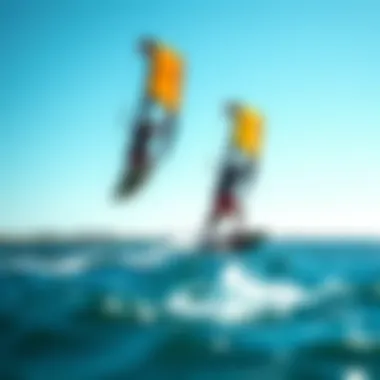
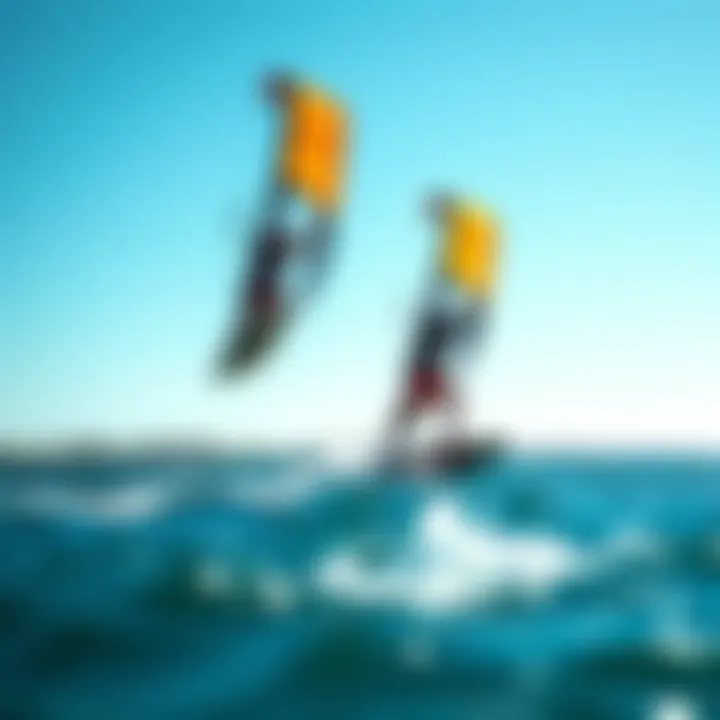
Not every kitesurfing package provides the same level of emergency support. Therefore, understanding what emergency resources are included can shape your choice of package. Key elements to look for include:
- Rescue Services: Some packages will include access to trained rescue personnel ready to assist in case of an emergency, ensuring quick retrieval if the conditions go awry.
- First-Aid Training: Knowing that instructors offer first-aid and safety briefings can lend peace of mind. This kind of support contributes to a well-rounded safety structure.
- Insurance Options: Many kitesurfing packages come bundled with insurance coverage for injuries and equipment damage. This is especially important if you're venturing in high-risk locations.
- Communication Devices: Packages that include devices such as radios or GPS trackers can enhance your safety. If something goes wrong, being able to communicate swiftly could save lives.
"Safety is not a product, but a process. Always be prepared."
Ultimately, what really matters is identifying what safety measures resonate with your needs. With a clear understanding of the possible risks and the emergency support included in your chosen package, you can enjoy the thrilling experience of kitesurfing while remaining safe and secure on the water.
Environmental Impact of Kitesurfing
The phenomenon of kitesurfing has surged in popularity over the years, offering thrilling experiences and breathtaking views. However, as with any outdoor activity, its growing presence raises critical questions regarding its environmental impact. Understanding this aspect is vital, especially for those engaging in the sport and its associated packages. Evaluating how kitesurfing interacts with ecosystems allows enthusiasts to make decisions that benefit not only their enjoyment but also the health of the environment.
emphasizing sustainability when enjoying kitesurfing not only fosters an eco-friendly ethos but also ensures that beautiful beaches, lagoons, and coastal areas remain pristine for future generations. A considerate approach can transform kitesurfing from a mere recreational activity into a powerful tool for environmental stewardship.
Sustainable Practices
Sustainable practices in kitesurfing begin with being mindful of the locations we choose and the materials we use. Some ways to practice sustainability include:
- Choosing Eco-Friendly Gear: Opting for kites and boards made from recycled or sustainable materials helps reduce waste and lowers the carbon footprint produced during manufacturing.
- Minimizing Impact on Habitats: Kitesurfers should avoid sensitive marine areas and keep their activities away from fragile ecosystems. Observing wildlife from a distance and steering clear of nesting sites are simple yet effective ways to reduce disturbance.
- Participating in Clean-Up Initiatives: Joining local environmental clean-up projects not only helps in preserving the beauty of kitesurfing spots but also enhances community ties among fellow enthusiasts. Organizations often set up beach clean events which can be both rewarding and eye-opening.
The practice of sustainable kitesurfing goes hand in hand with increasing awareness among participants. By promoting responsible behavior, the kitesurfing community can foster a sense of accountability towards the environment that supports our beloved sport.
Understanding Local Regulations
When it comes to kitesurfing, it’s essential to be informed about local regulations and guidelines that are put in place to protect natural habitats and communities. Every region may have specific rules that govern where and how kitesurfing can occur. Ignoring these can lead to penalties and negatively impact the sport’s reputation.
Key points to consider include:
- Local Access Rights: Familiarize yourself with beach access points designated for kitesurfing. Some areas might have restrictions in place during specific seasons or times of the year to protect nesting birds or marine life.
- Permits and Licensing: Certain locations require permits for kitesurfing or specific gear, especially in areas that are home to marine protected zones.
- Safety Regulations: Pay attention to local guidelines on safety gear and safety practices, as these are often informed by unique geographical considerations, contributing to safer experiences for all participants.
Being informed ensures compliance and helps bolster the kitesurfing community's relationship with the environment and local authorities. When kitesurfers show they respect regulations, it strengthens the case for the sport's sustainability and its future viability.
In summary, addressing the environmental impact of kitesurfing is crucial for those who cherish the sport. By adopting sustainable practices and respecting local regulations, kitesurfers can enjoy their passion while ensuring that it remains a viable and enjoyable activity for years to come. For those seeking further information on sustainability efforts, consult sources like Wikipedia and local environmental groups.
Future Trends in Kitesurfing Gear and Packages
The kitesurfing landscape is evolving rapidly, and staying up to date with the latest trends is crucial for enthusiasts, instructors, and event organizers alike. The advancements in technology and shifts in consumer preferences are shaping the way kitesurfing packages are structured and what gear is included. Being informed about these trends not only enhances the kitesurfing experience but also underscores the importance of making smart, informed purchasing decisions. With an eye on the future, let’s dive into the notable technological advancements and market predictions.
Technological Advancements
In the realm of kitesurfing gear, innovation is the name of the game. Recent improvements in materials and designs have led to kites that are lighter and more durable. For instance, the introduction of ripstop fabrics and advanced waterproof coatings have significantly enhanced the longevity and performance of kites and boards.
Moreover, manufacturers are increasingly employing smart technology in gear. Some brands are now integrating sensors into kites and boards to provide real-time data on performance metrics such as speed, height, and wind conditions. This technology allows riders to analyze their sessions and make adjustments on the fly, ultimately improving their technique.
Another noteworthy development is the rise of eco-friendly materials in kitesurfing products. Brands are prioritizing sustainability, using recyclable materials and eco-conscious production processes. This not only appeals to environmentally-aware riders but also helps in shaping a positive image for the sport in the market.
Market Predictions
Looking ahead, the kitesurfing market is expected to see continued growth driven by several factors. Firstly, as more individuals become aware of the thrill and freedom that kitesurfing offers, participation rates are likely to rise. This increase in demand will push brands to innovate further, creating new products and packages tailored to first-timers and seasoned riders alike.
Experts predict that personalized kitesurfing experiences will gain traction. Expect to see packages that allow customers to select specific gear based on individual preferences, skill level, and local conditions. For example, an instructor could create a customized package for students, blending gear rental and lessons into one cohesive experience, tailored specifically to their needs.
Additionally, virtual and augmented reality are poised to play roles in the kitesurfing community. From simulation training courses to virtual meetups for enthusiasts to share experiences, these technological advancements will likely become integral parts of the adventurous lifestyle that defines kitesurfing.
"Innovation in kitesurfing gear brings both excitement and responsibility. As enthusiasts, we must not only embrace new technologies but also advocate for sustainable practices that ensure the sport thrives for future generations."
Relevant Resources:
- Wikipedia - Kitesurfing
- Britannica - Kitesurfing History
- Reddit - Kitesurfing Community
- Kiteboarder Magazine
- Kitesurfing.com
- Sustainable Kitesurfing
Stay tuned to these trends as they unfold; they hold the key to the next level of kitesurfing enjoyment.
End: Making Informed Decisions
Choosing the right kitesurfing package is no small feat. With a variety of options on the table, making an informed decision can be the difference between a thrilling adventure and a frustrating experience. It's not just about picking a package that sounds appealing; it’s about understanding your individual needs and how those align with what’s being offered.
First and foremost, one must reflect on personal skill levels. Are you a novice just learning the ropes, or a seasoned kiteboarder looking to fine-tune your skills? Packages tailored for beginners often provide comprehensive lessons and easy-to-use gear, whereas advanced options might include coaching from top instructors and access to high-performance equipment. Consider your proficiency carefully to avoid the pits of disappointment.
Additionally, contemplate your preferred locations. Different spots offer unique conditions, whether you desire tranquil waters or strong winds. Some places, such as the Caribbean, provide stunning landscapes and ideal weather but can be pricier. Understanding where you want to go, along with what kind of atmosphere you seek—luxurious resort vibes or a rustic experience—should shape your decisions.
Moreover, be mindful of budget constraints and what each package entails. The old saying, "you get what you pay for," comes into play. While it may be tempting to opt for the cheapest alternative, low price tags can sometimes equate to a lack of quality or support. Conversely, pricier packages oftentimes include better equipment, higher safety standards, and extensive support services.
In essence, making informed decisions about kitesurfing packages involves a careful appraisal of your abilities, preferences, budget, and the destinations that call to your heart. Ultimately, thorough preparation could pave the path to unforgettable memories on the water.
Summarizing Key Takeaways
In recap, here are the key takeaways that can help guide your journey into kitesurfing:
- Know Your Skill Level: Matching your experience with the right package is essential for a fulfilling experience.
- Research Locations: Understanding the unique qualities of your desired destination can enhance your time spent on the water.
- Budget Wisely: Look into the offerings that fit your financial range without compromising quality.
- Explore Reviews and Testimonials: Check online platforms and forums like Reddit or Facebook to gather insights from fellow kitesurfers.
Organizing these elements effectively will enable you to sift through the noise, pinpoint what works for you, and select a package that aligns with your kitesurfing ambitions.
Encouraging Responsible Kitesurfing Practices
As you dive headfirst into kitesurfing, it is vital to embrace sustainable and responsible practices. Kitesurfing is a thrilling adventure, but it also holds an important relationship with the environment and local communities. Here are some recommendations to ensure that your enjoyment doesn’t come at a cost to the planet:
- Respect Local Laws: Every destination may have its own regulations regarding kitesurfing. Familiarize yourself with these to avoid unnecessary fines or disruptions.
- Choose Eco-Friendly Gear: More and more brands are prioritizing sustainable materials. Look out for equipment that reduces environmental impact, such as biodegradable kites and boards.
- Support Local Businesses: When possible, choose local instructors and shops. This helps sustain the local economy and fosters a sense of community connection.
- Clean Up After Yourself: Whether it’s a snack wrapper or broken gear, ensuring that the waters and beaches remain pristine is a shared responsibility.
- Educate Others: Encourage fellow kitesurfers to adopt environmentally-friendly practices to maximize collective efforts.
By advocating for responsible kitesurfing, not only do you preserve the stunning locales where you play, but you also contribute to a growing culture of sustainability within the sport.















